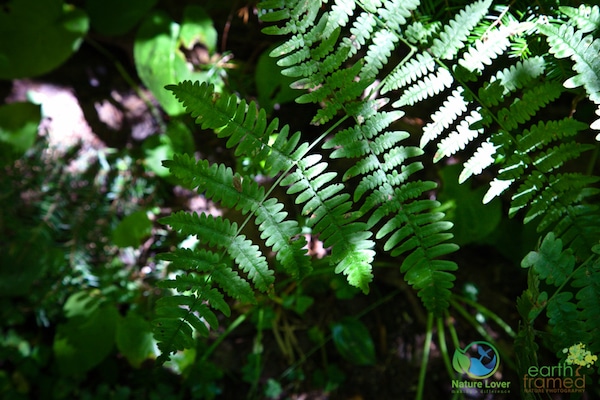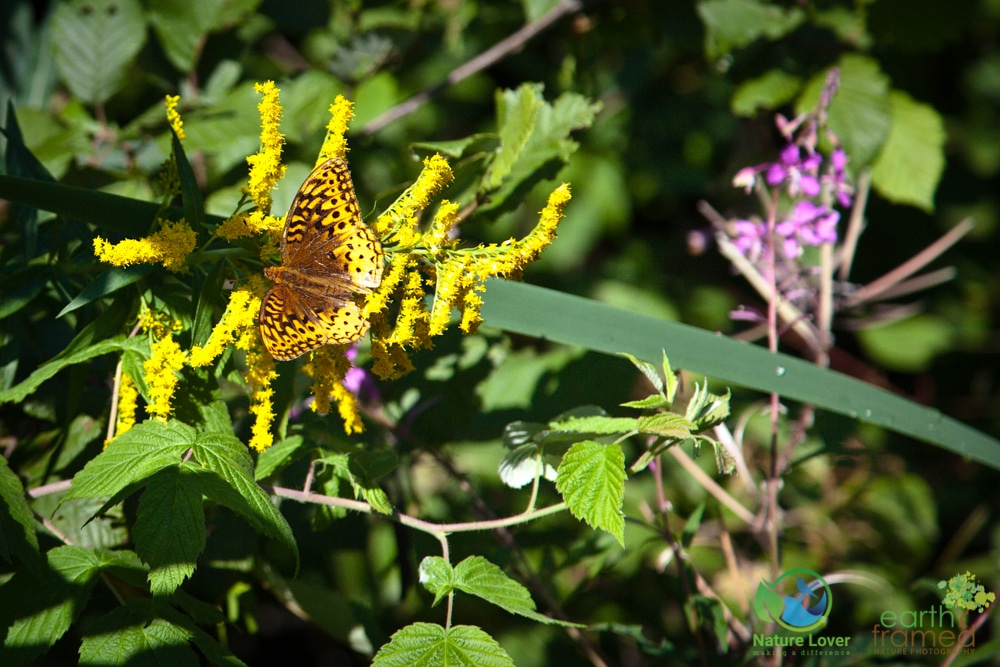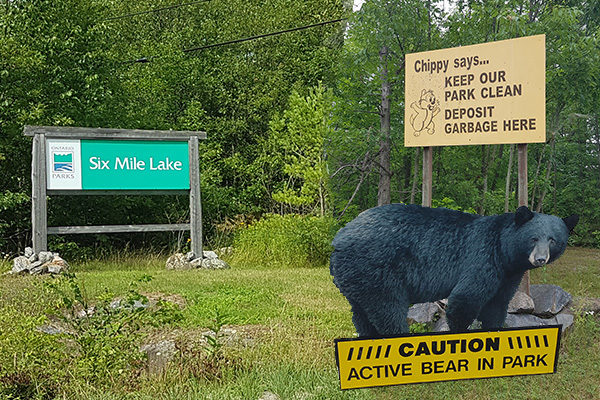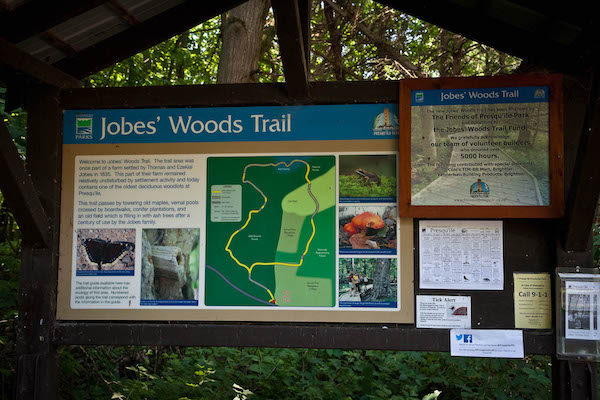The Big Pines Trail in Algonquin Park features old growth White Pines that survived the 1880’s logging of the area. While hiking this 2.9 kilometre looped trail we enjoyed the various plant life along the edge of the path. Someday I hope to get to the park earlier in the season to see what other plant life can be found in the springtime.
There were various ferns along the way that were still vibrant and full bloom. 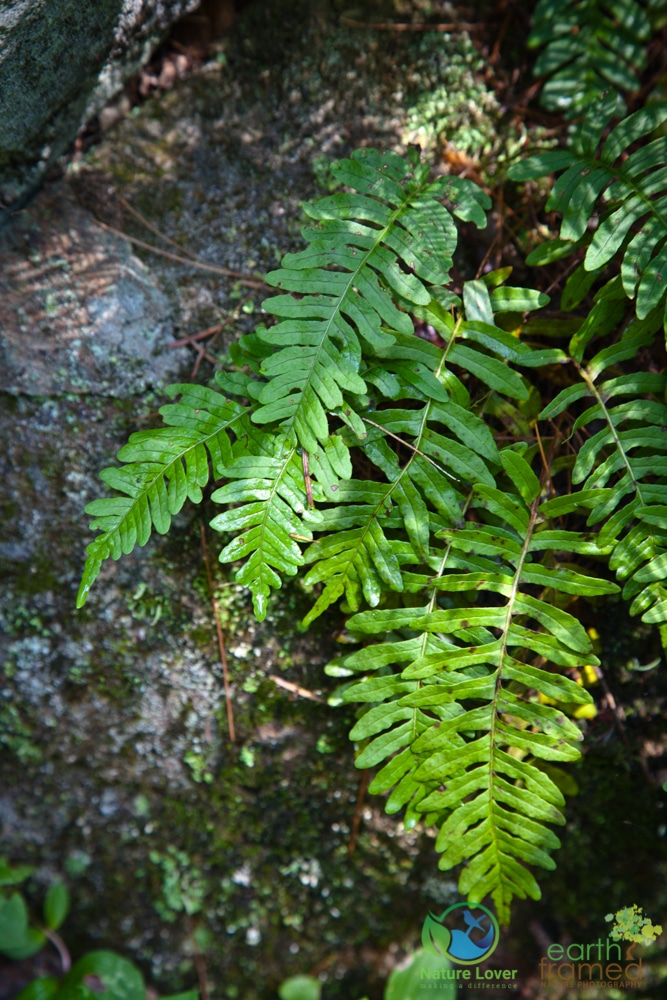
Some ferns, like this Common Polypody, are easier to identify because there are few that are the same shape, colour or size. This evergreen plantlikes to grow in dry rocky areas.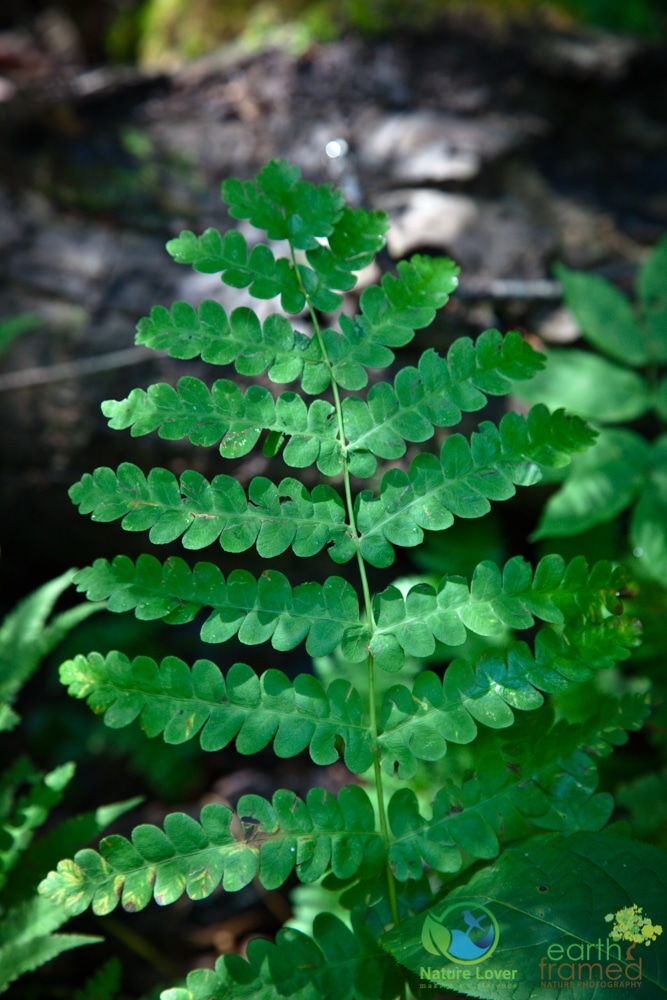
I believe the above is a young Cinnamon Fern but it took me a while to figure that out. Not all plants will grow to become a perfect specimen, which can make it difficult when books and online sources show you many examples that still do not seem to identify the one you photograph in nature. As always, it is best to take several pictures of different aspects of a plant if you wish to identify it later.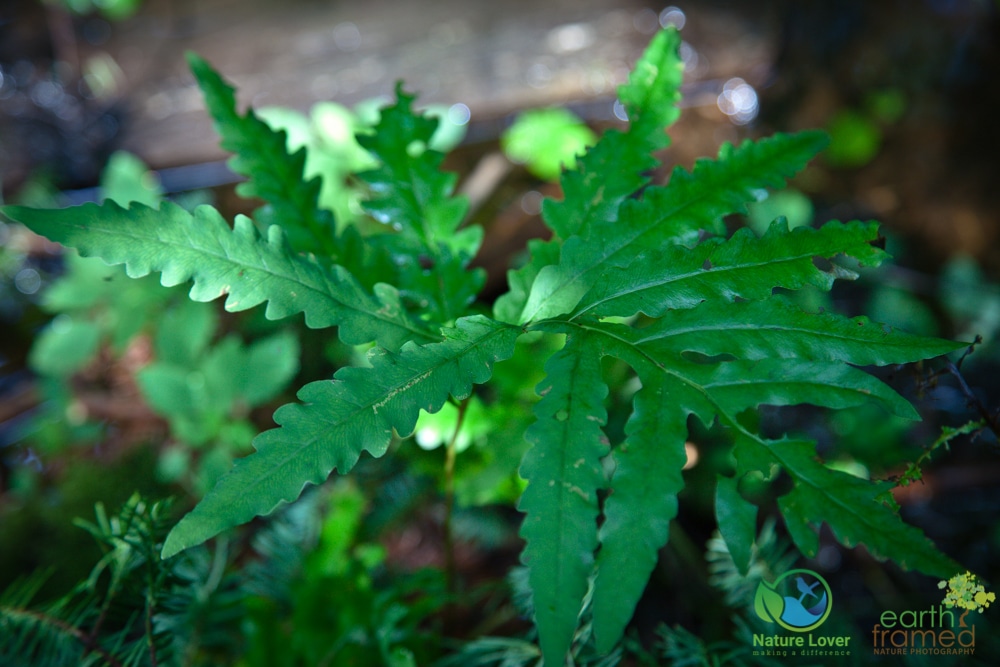
This is a Sensitive Fern, which has seen better days. This is one of the few ferns that I know by sight, although I had accidentally taught myself the wrong name for it and have had to relearn the correct one. 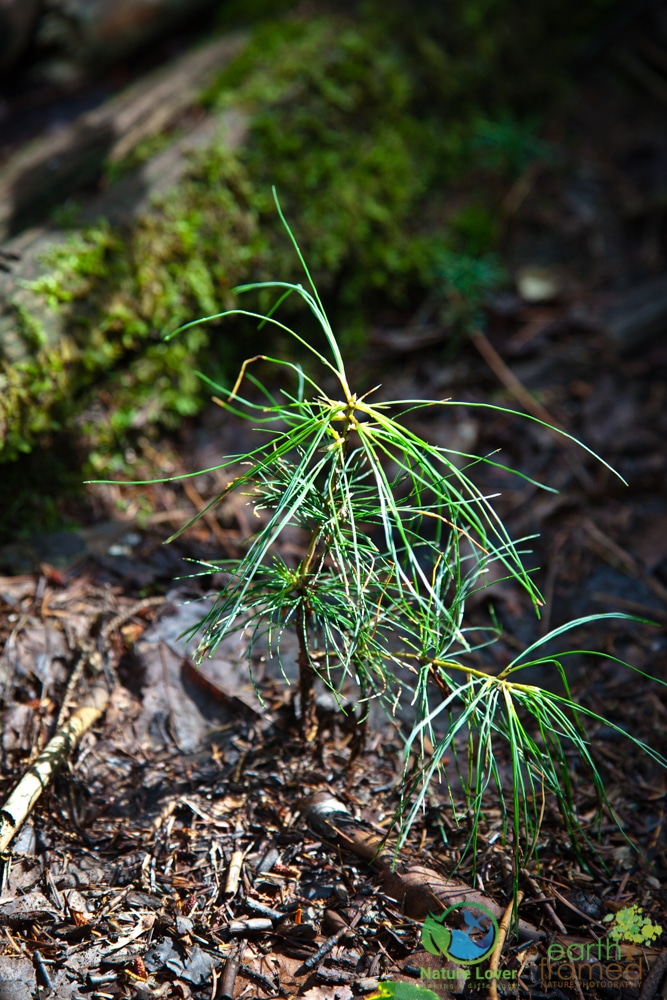
There are several horsetails that we came across during our trip to Algonquin. This is the Woodland Horsetail, which has branched branches coming off of its stem.  Another type of Fern Allie is the perennial clubmoss. Above is the Shining Clubmoss which is similar to the Interrupted Clubmoss except it doesn’t have cones at its tips.
Another type of Fern Allie is the perennial clubmoss. Above is the Shining Clubmoss which is similar to the Interrupted Clubmoss except it doesn’t have cones at its tips.
At the beginning of the trail we saw this Great Spangled Fritillary enjoying a golden rod plant. It sat quietly long enough for me to get close enough with my 24-105mm lens to capture this shot. 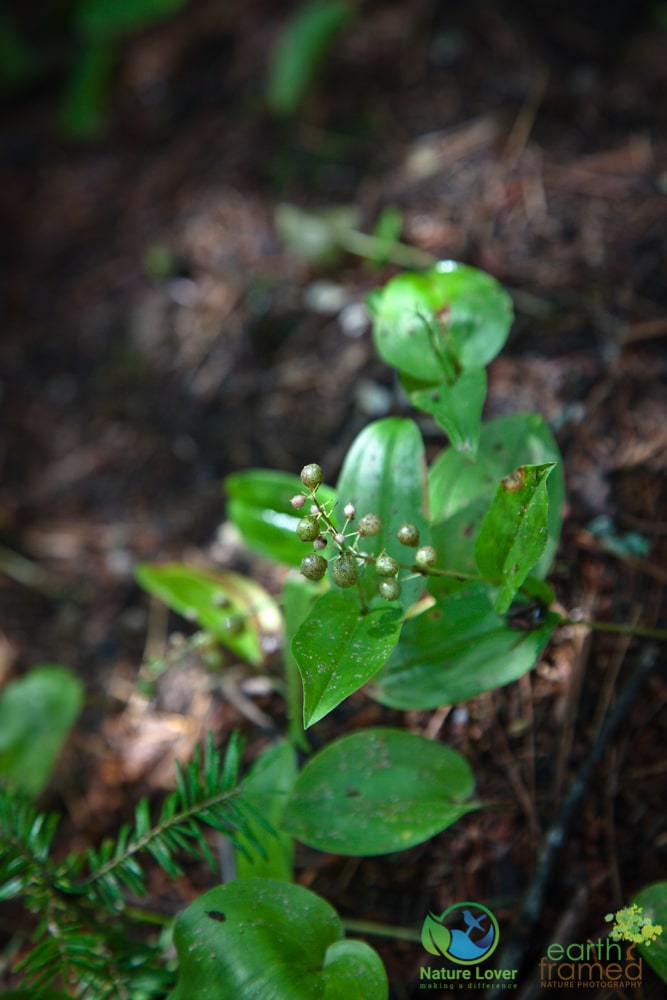
False Solomon’s Seal was found along the trail, already producing it’s fruit which will gradually go from green to red by the end of the season.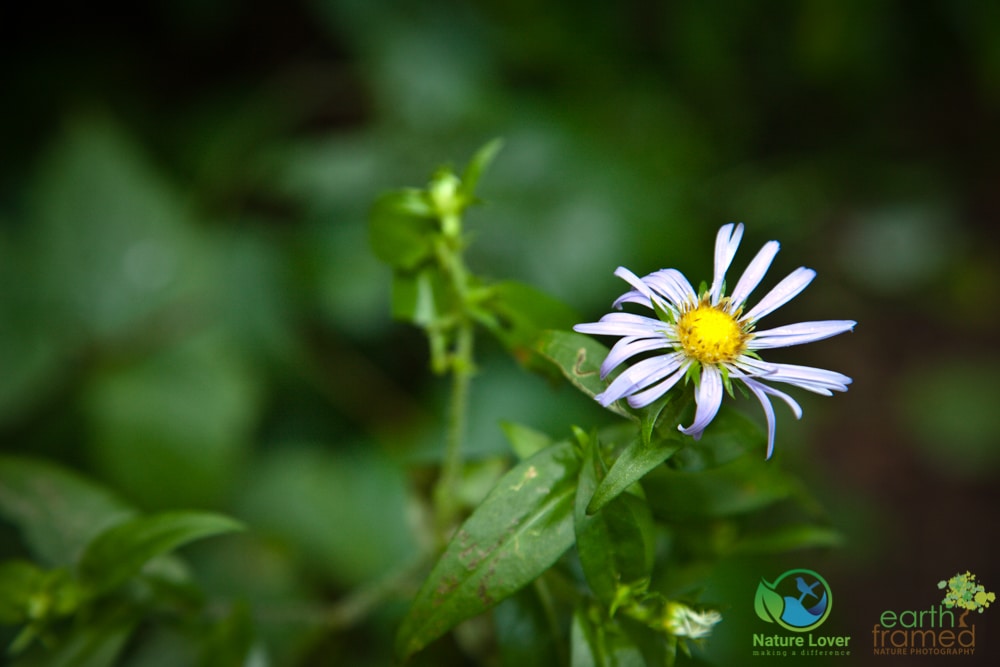
A few asters were also spotted during our hike. Asters can be very difficult to identify, since there are so many of them and they can be somewhat similar to each other. 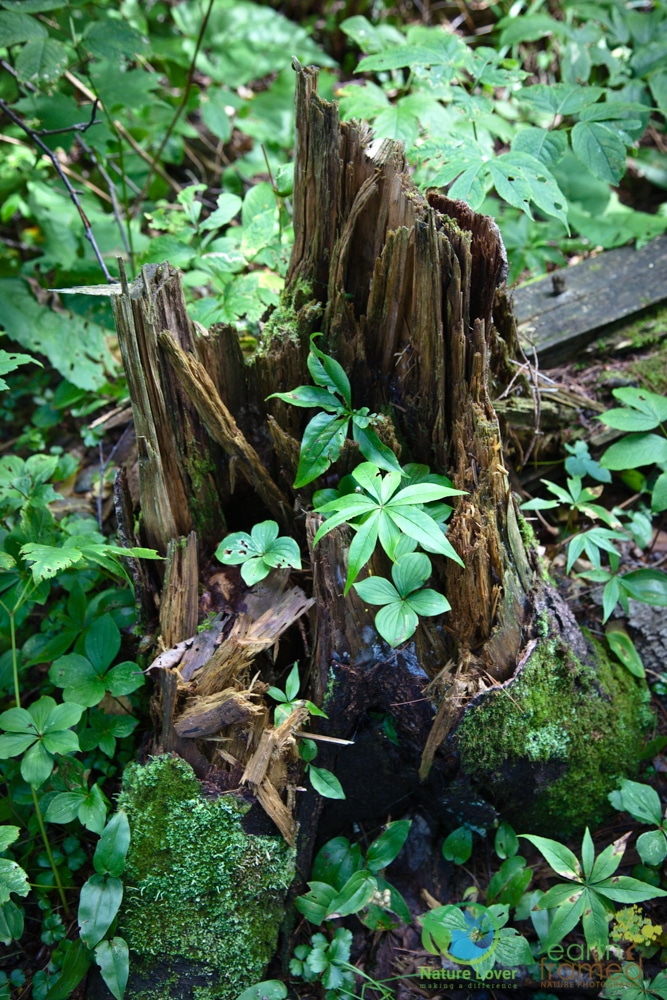
Around this rotting tree truck you can spot many plant species, like Bunchberry and Starflower, as well as the blanket of moss. 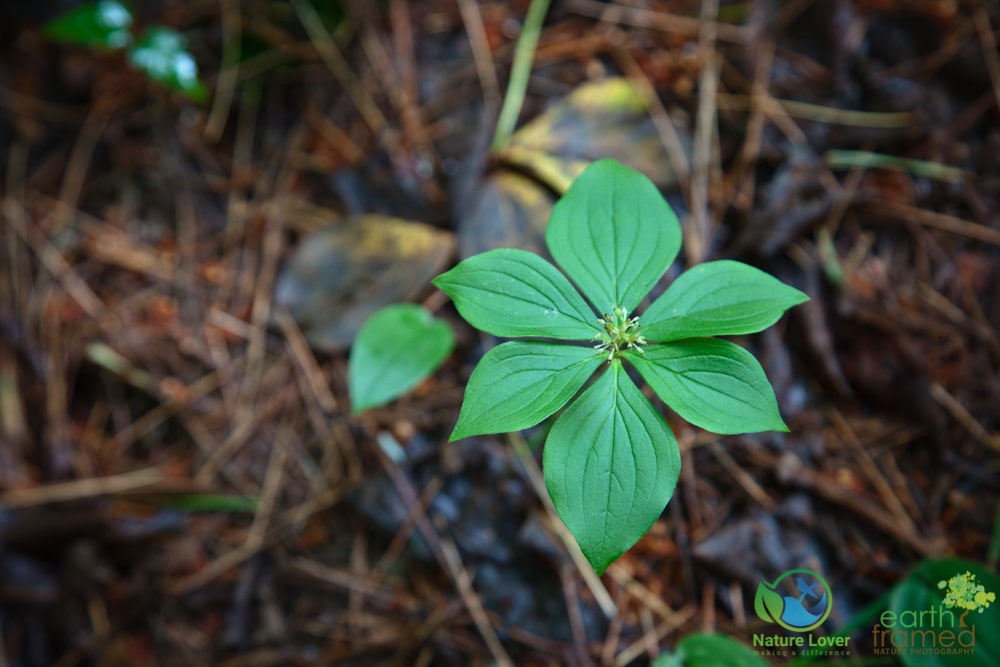
Bunchberry is a lovely native plant found in Central to Northern Ontario. The leaves are a distinct shape and grouping and the plant produces a gorgeous white flower in the centre of the leaves, followed by a showy bunch of bright red berry-like seeds.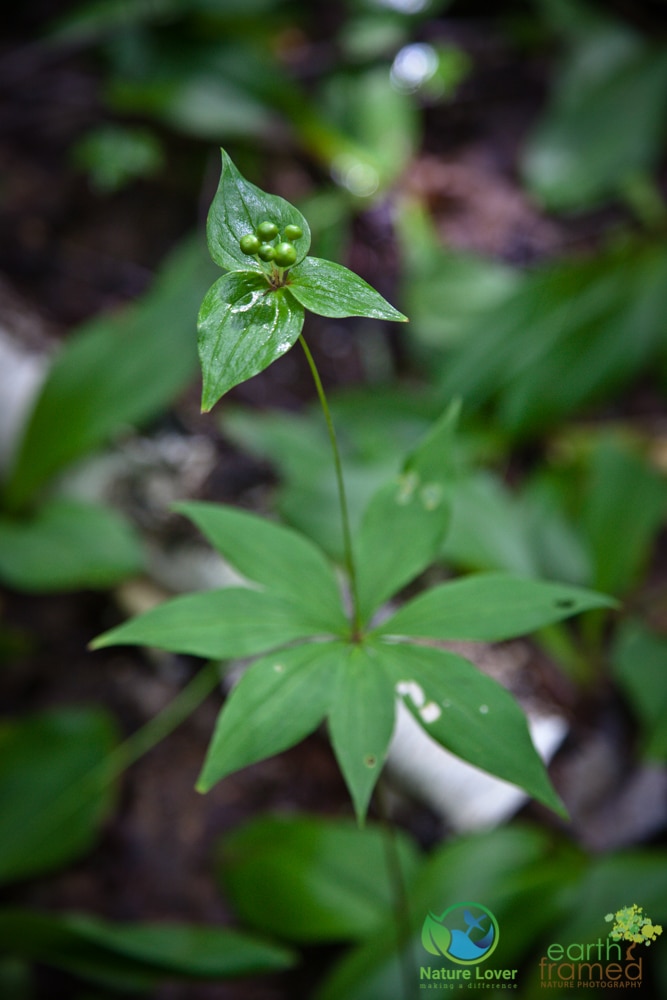
The Starflower is another distinctive native wildflower that is always a delight to spot in any of it’s forms. The leaves resemble a star and the white, delicate flower rises up above the whorled leaves.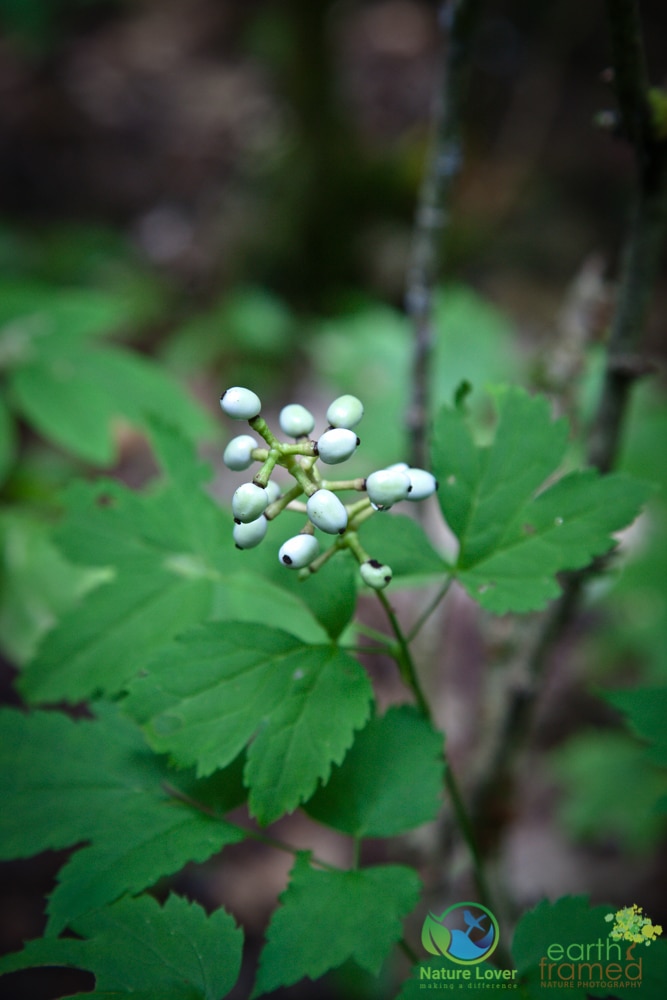
White Baneberry, also known as Doll’s-eyes, is a native plant with a showy white flowers which become white fruit with a black dot at the end of them. These berries are poisonous. As the berries grow and mature, the stalk will turn red.
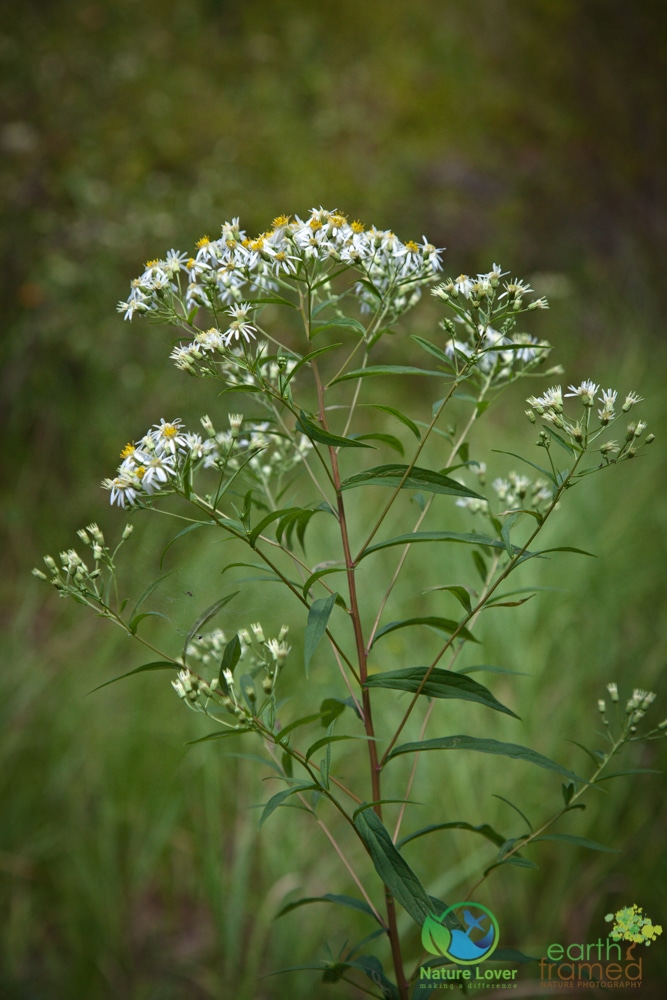 At the entrance, which is also the end of the trail, there was an open area with more large asters growing.
At the entrance, which is also the end of the trail, there was an open area with more large asters growing.


